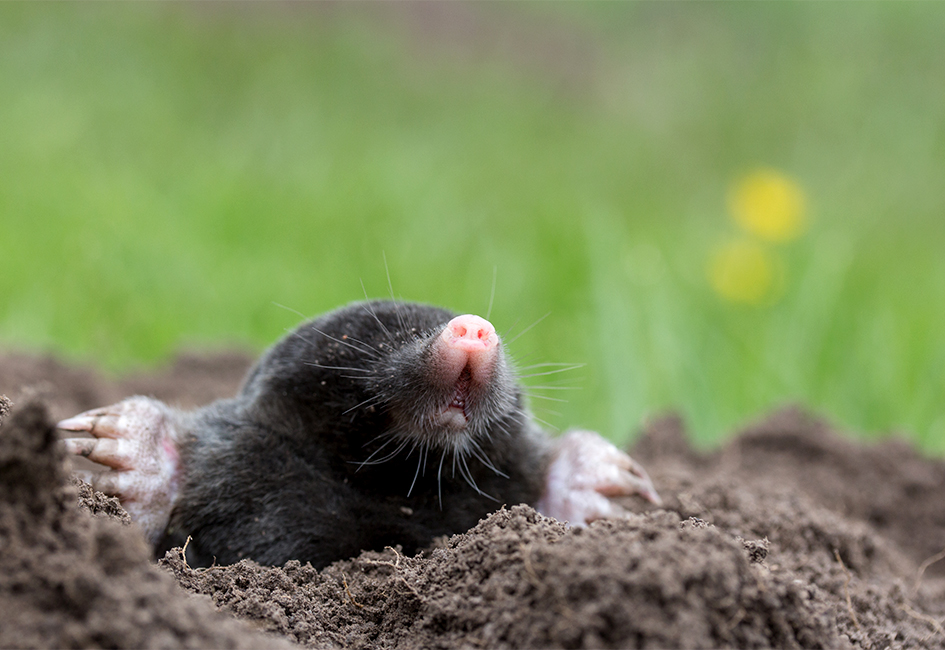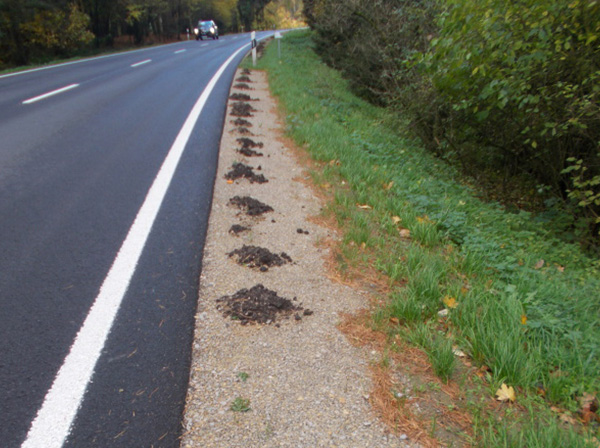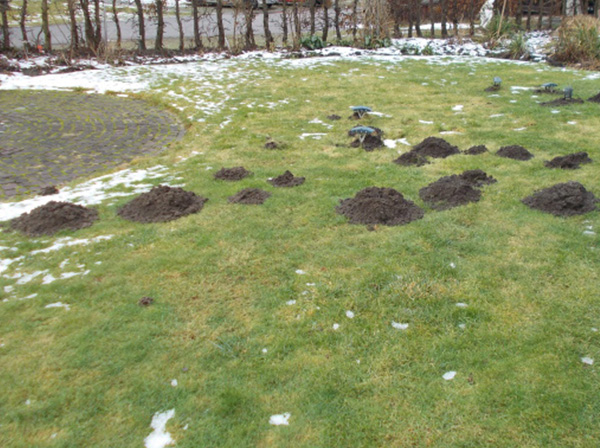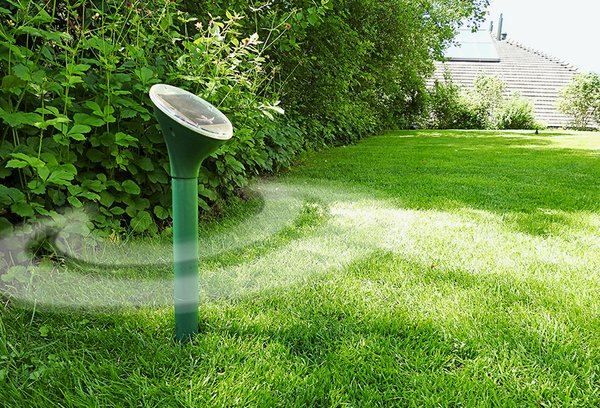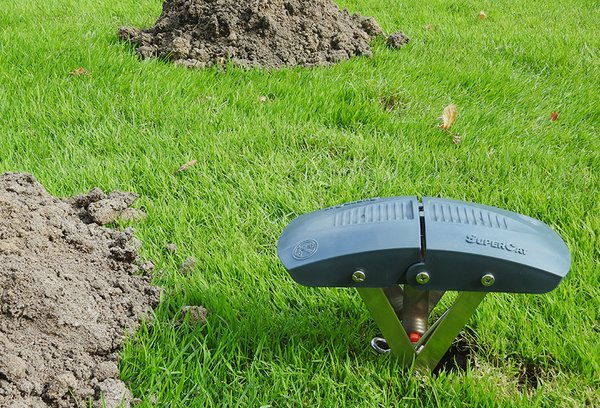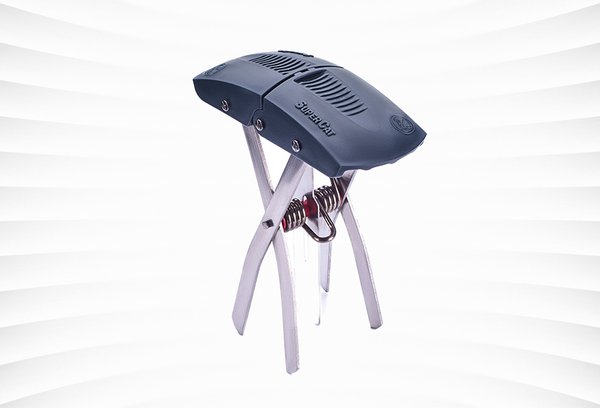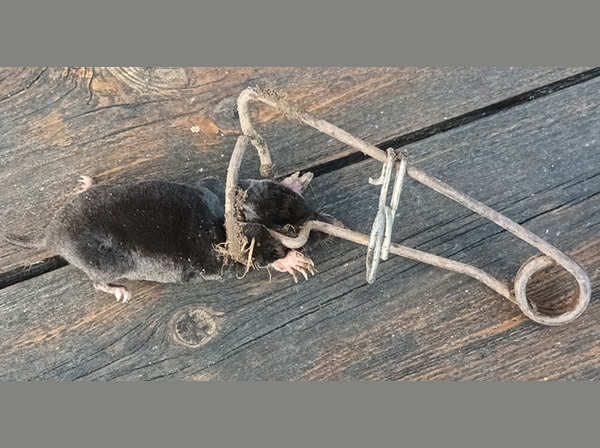Moles are not rodents but predators and, like hedgehogs and shrews, are insectivores. These small mammals live almost exclusively below the earth's surface in their self-dug tunnel system.
Their bodies are particularly well adapted to digging tunnels and living underground. The bones of the hands, arms and shoulders, as well as the associated muscles, differ greatly from the usual quadruped physique. Particularly striking are the digging hands, which seem to have grown directly on the body without arms. Equipped in this way, they can dig up to 30m of tunnel per day. Their blood can transport oxygen better than that of species living above ground. This allows the mole to breathe air that contains little oxygen and a lot of carbon dioxide. Its velvety fur has no fixed direction, this gives the mole the ability to easily move in either direction in the narrow tubes.
in the narrow tubes. Its sense of smell, touch and hearing are very highly developed. With their snouts, moles can even sense the weak electrical impulses of prey's muscles. On the other hand, they cannot see very well.

The tunnels form a complex network that extends over an area of several hundred to over 2000 square metres. The territory size depends mainly on the amount of earthworms in the soil. The total length of the tunnels can reach 500 metres. The mole brings the spoil from tunnel construction to the surface and deposits it as molehills. Close to the surface, at a depth of 5 to 15 cm, where most prey are found, are the hunting tunnels. From here, tunnels lead to the deeper areas, where nest and storage chambers are located at a depth of up to 80 cm. The nest chambers are padded with grass and leaves. In the storage chambers, the mole stores "stunned" earthworms. To prevent them from escaping, the mole bites off their heads. Hundreds of earthworms with a total weight of over 1.5 kg can be stored here for the winter.
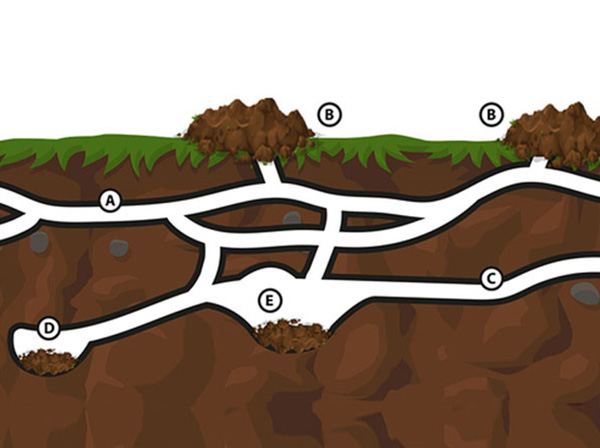
In places with a high water table, where it is not possible to build the nest chambers at a frost-proof depth, the mole builds large "castles". These are particularly large and high piles, visible from afar, under which the nest is then located. The thick layer of earth above the nest provides insulation in winter.
Mole tunnels are transverse-oval, about 6cm wide and 4cm high. Especially the hunting and exploration tunnels are advanced quickly but rather sloppily. Roots hang from the ceiling and loose soil lies on the passage floor. Deeper and frequently used tunnels are smooth and clean.
When tunnelling in solid earth and deeper layers, the earth is loosened with the digging hands and scraped backwards. For removal, the mole turns around and pushes the earth as a plug with its front legs and heads through the tunnel to an exit outside. The plug of soil can weigh up to 10 times as much as the mole itself. The ejected plugs of earth then gradually forms a molehill of coarse clods of earth. A mound is typically 30-50cm in diameter and consists of up to 8kg of soil. In the middle of a mound there is always a steep passage leading down to the horizontal tunnels. Above horizontal tunnels, molehills are located at regular intervals and mark the underground course.
In very loose soil, the mole can simply push the soil to the side and up or down without removing the soil from the passage. To do this, the roof of the tunnel often bulges upwards and the course is clearly visible from above.
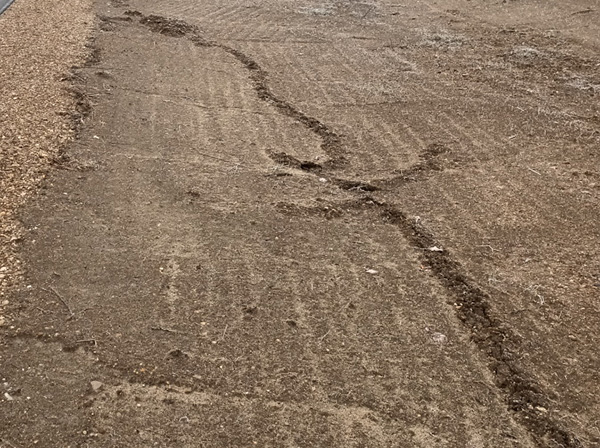

Moles live in their tunnels in the dark largely independent of the position of the sun above ground. The mole has 3 activity phases of about 4 hours per day. The rest of the time it sleeps. The tunnel system is also walked every 4-5 hours. Moles are active all year round, even in winter. From autumn onwards, worms and insects retreat to frost-protected deeper layers. The moles follow them and also burrow deeper into the ground. In spring, prey and moles migrate back to the upper layers of soil. Accordingly, there is increased burrowing activity among moles in autumn and spring and more mounds are raised.
Mole burrows often follow structures such as house foundations, perimeter walls or paths.
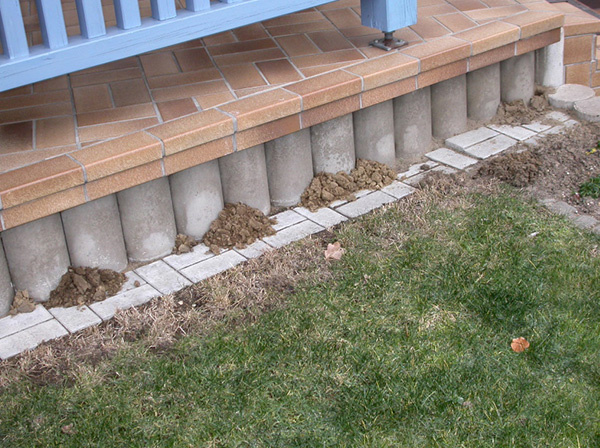


The mole normally keeps its tunnel system closed, open holes are rare and are usually due to mice that have colonised tunnels abandoned by the mole.
Moles live as grumpy loners who defend their tunnel system very aggressively against conspecifics and other intruders. Neighbouring territories overlap only at the edges, the neighbours know each other, communicate and usually also respect each other's territorial boundaries. To avoid direct encounters and fights, animals with overlapping territories have slightly staggered activity times. Communication takes place via scent marks, but also acoustically over greater distances. For example, the cries of a mole cruelly caught in a trap cause trap shyness in surrounding animals within a radius of several hundred metres. Males and females only meet during mating season.
The dispersal of the moles into new territories takes place in the near vicinity underground with exploratory tunnels, but also above ground. The above-ground migrations take place at night, often during rain, and longer distances of over 1km can be covered.
Natural enemies:
The mole's enemies include birds such as owls, birds of prey, corvids and storks, as well as snakes, stoats, foxes, martens, wild boars, dogs and cats. Dogs and cats catch moles for the pleasure of hunting, but do not eat them because of their strong taste.


![[Translate to Svenska:] [Translate to Svenska:]](/files/pics/7/2/csm_Mouse__860x586px_4295e63b71.jpg)

![[Translate to Svenska:] Ratten [Translate to Svenska:] Ratten](/files/pics/0/9/csm_Rat__860x586px_e3e988d139.jpg)
![[Translate to Svenska:] Maulwurf [Translate to Svenska:] Maulwurf](/files/pics/2/e/csm_Mole__860x586px_d43e7e8948.jpg)
![[Translate to Svenska:] indian-meal moth on oatmeal [Translate to Svenska:] indian-meal moth on oatmeal](/files/pics/b/6/csm_indian-meal-moth-on-oatmeal_low_659108f917.jpg)
![[Translate to Svenska:] Schnecken [Translate to Svenska:] Schnecken](/files/pics/5/f/csm_Slug__860x586px_da4b2d7f83.jpg)
![[Translate to Svenska:] Vogel [Translate to Svenska:] Vogel](/files/pics/8/9/csm_Bird__860x586px_273b7ffaf9.jpg)
![[Translate to Svenska:] Marder [Translate to Svenska:] Marder](/files/pics/d/6/csm_Marten__860x586px_7508da5714.jpg)
![[Translate to Svenska:] Fliege [Translate to Svenska:] Fliege](/files/pics/a/d/csm_Fly__860x586px_66c70bb32f.jpg)

